Snowdonia |
|
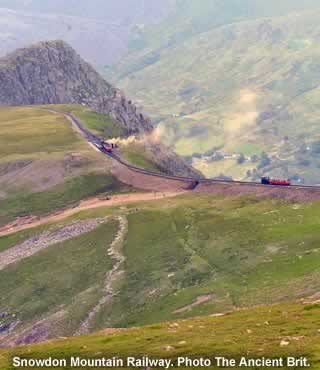 |
|||
Britain > North Wales > Snowdonia |
||
A mountainous region in north Wales, designated a National Park and famous for its beauty and stunning views |
||
Listen to this article |
||
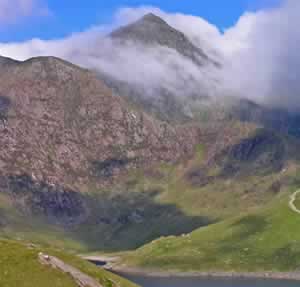 Mount Snowdon Photo by Gdr |
||
Snowdonia is a mountainous region in north Wales. It was designated a National Park in 1951, the first in Wales. In Welsh the district is known as 'Eryri'. The origin of this name is a topic of much debate. Some believe it to be derived from eryr, the Welsh for eagle, whilst other believe it means simply 'highland'. The English name derives from Snowdon which is the highest mountain in Wales at 1085 metres. These days Snowdonia is largely synonymous with the Snowdonia National Park, although before the parks designation, the term referred to a much smaller area centred on the Snowdon massif. As Eryri, the area has a special place in the history, traditions and culture of Wales, with many a poem, song and literary piece penned as a result of its inspirational beauty. |
||
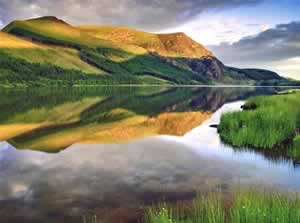 The beauty of Snowdonia Photo by Richard0 |
||
The most popular attraction of the region is Snowdonia National Park, or in Welsh 'Parc Cenedlaethol Eryri'. It covers 2142 square kilometres and includes 60 kilometres of coastline. Like most parks in England and Wales, Snowdonia is made up of both public and private lands. Almost 70% of the park is privately owned, with virtually all the rest belonging to the Forestry Commission, the National Trust, The Countryside Council for Wales and the National Park Authority. Most of the land is open although some is agricultural and there are over 26,000 people living within the park. It attracts over 6 million visitors a year, split equally between day and staying visitors. It is the third most popular National Park in England and Wales. The Park has over 2253 kilometres of public footpaths and a large part of it is covered by Right to Roam laws, which allow public access to certain private lands for recreational use. Unusually, it has a hole in the middle excluded from the Park boundary. Here sits the town of Blaenau Ffestiniog, a traditional slate quarrying centre. It was excluded so as to allow the development of new light manufacturing to replace the dying slate industry. |
||
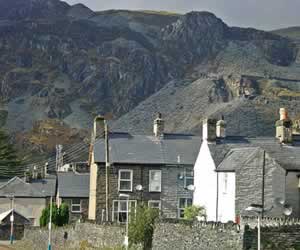 The town of Blaenau Ffestiniog Photo by artq55 |
||
Snowdonia can be divided into four main mountainous regions. The most popular is the northernmost district which includes the Nantlle Ridge, the Glyderau and the Snowdon Massif. All of the mountains in Wales above 3000ft can be found in this area. Secondly is the more central region around the mountains surrounding Blaenau Ffestiniog. Thirdly is the more remote area in the west which includes the Rhinogydd as well as the Migneint; an area of bog. Finally, the fourth area is the southernmost district, which incorporates the Tarren range, Cadair Idris and the Aran group which includes Aran Fawddwy, the highest mountain in the UK south of Snowdon. |
||
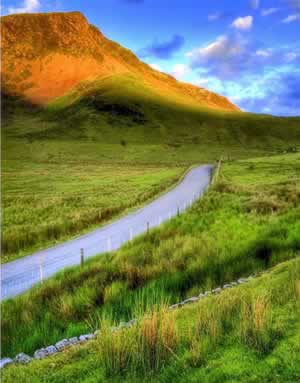 The mountain of Y Garn in Snowdonia Photo by Richard0 |
||
Snowdonia is one of Britain's most visually stunning regions and for any nature lover a must see on any trip to Britain. The Park's mountainous topography makes for excellent hiking and rambling. Many visitors concentrate on Mount Snowdon itself which offers amazing views over the surrounding landscape and the satisfaction of ascending one of the UK's highest peaks. If you don't fancy the walk though, the Snowdon Mountain Railway offers a more leisurely way of reaching the top! Whilst the other high peaks of Snowdonia are also popular, the more southerly and westerly lower mountains still offer fantastic scenery but without the crowds. Favourites include Y Garn along the ridge to Elidir Fawr and Cadir Idris near Dolgellau. For those requiring a more adrenaline filled adventure, Tryfan is one the few UK Mountains south of Scotland that requires all four limbs to climb! |
||
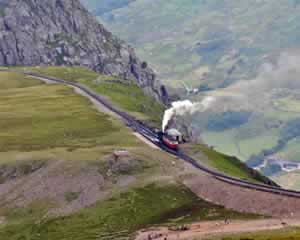 Snowdon Mountain Railway Photo by The Ancient Brit |
||
The natural landscape of Snowdonia is a unique mix of deciduous and planted coniferous forests, sand dunes, bog land, mountains and lakes. Tree species include Welsh Oak, Birch, Hazel and Ash. In the north of Snowdonia one can also find the Snowdon Lily, which is an artic alpine plant as well as the rainbow coloured Snowdon Beetle, both of which can only be found in Britain in this region of Northern Snowdonia. Furthermore, it's the only place in the world where the Snowdonia hawkweed, Hieracium snowdoniense can be found. One of the major threats to the Park in recent years is the rampant growth of Rhododendron bushes, an alien species that can lead to the desolation of the landscape. |
||
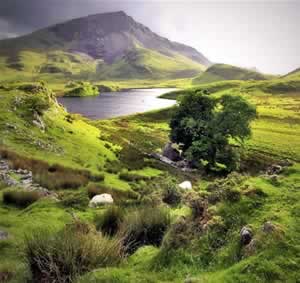 A typical Snowdonia scene Photo by Richard0 |
||
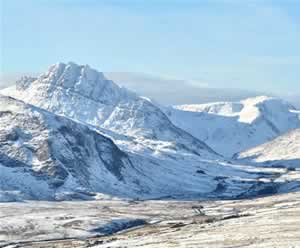 Ogwen Valley in Snowdonia during Winter Photo by erwlas |
||
Snowdonia is famous across the world for its aesthetic beauty and stunning environment. In such an overcrowded island as the UK, it is a breath of fresh air and rejuvenating to the soul, to be able to venture out into its wildness. So why not escape yourself and remember what it is to be free .. |
||
|
||
The Snowdon Mountain Railway is open daily from late march to October weather permitting. Trains run from 9am depending on passenger demand. Summit return tickets cost around £25 for adults, £18 children. Llanberis, Gwynedd LL55 4TY. Tel: 0844 493 8120 |
||
|
Pocket Britain is optimised for use on a smartphone or tablet with internet access. All content is subject to copyright. All reasonable methods have been used to ensure information supplied is accurate at the time of publication. However, it is advisable to check information before relying on it. Privacy Policy |